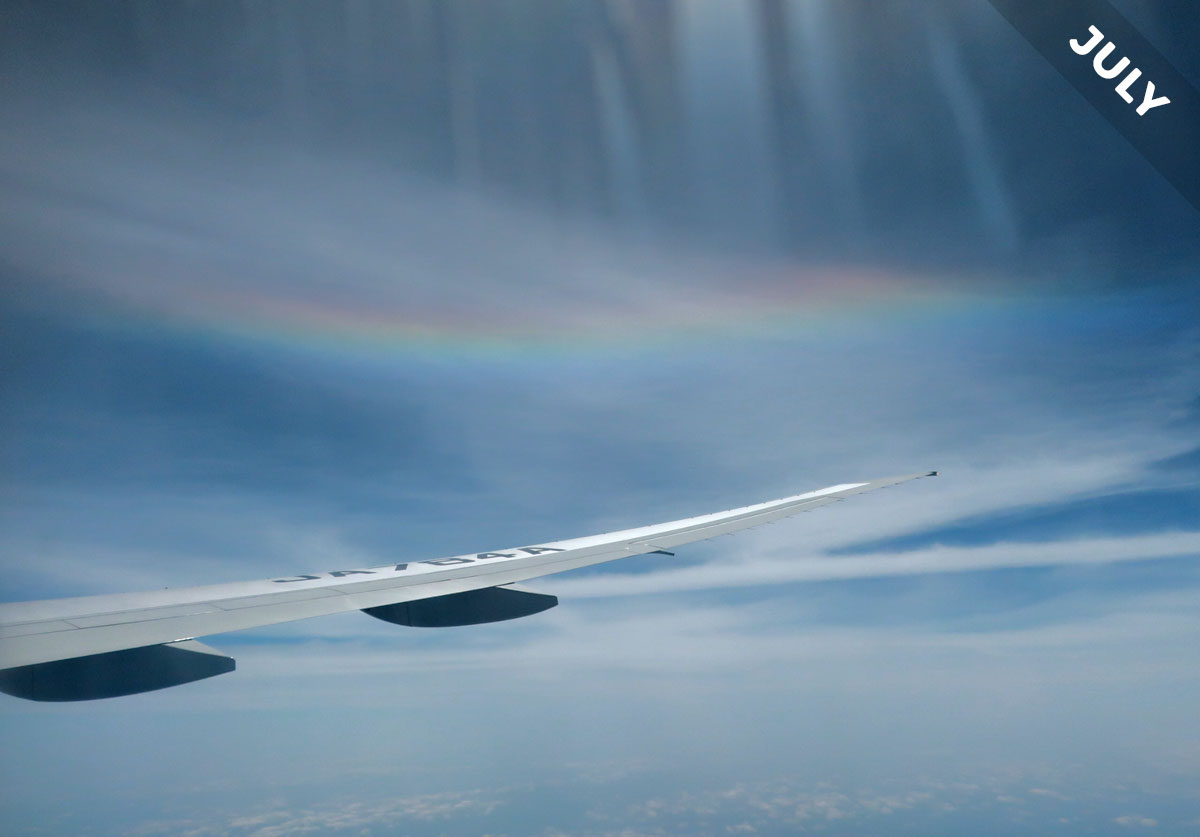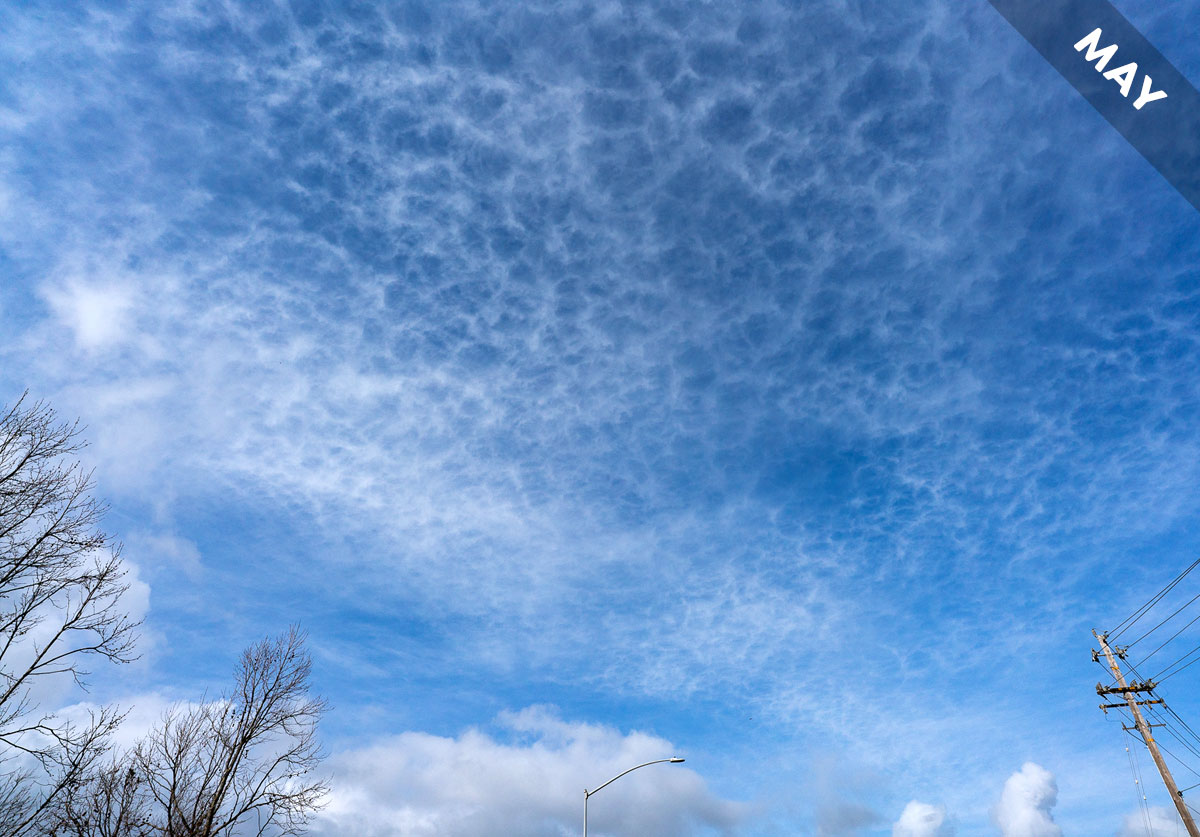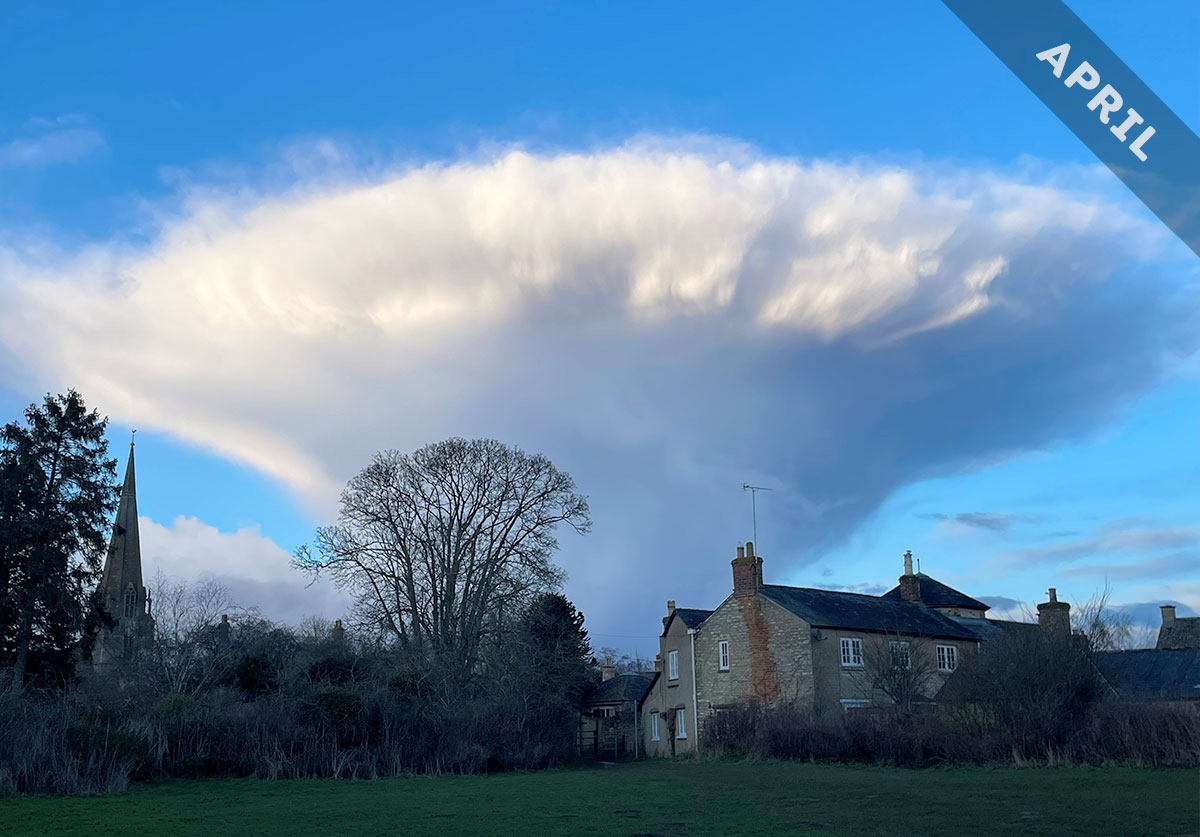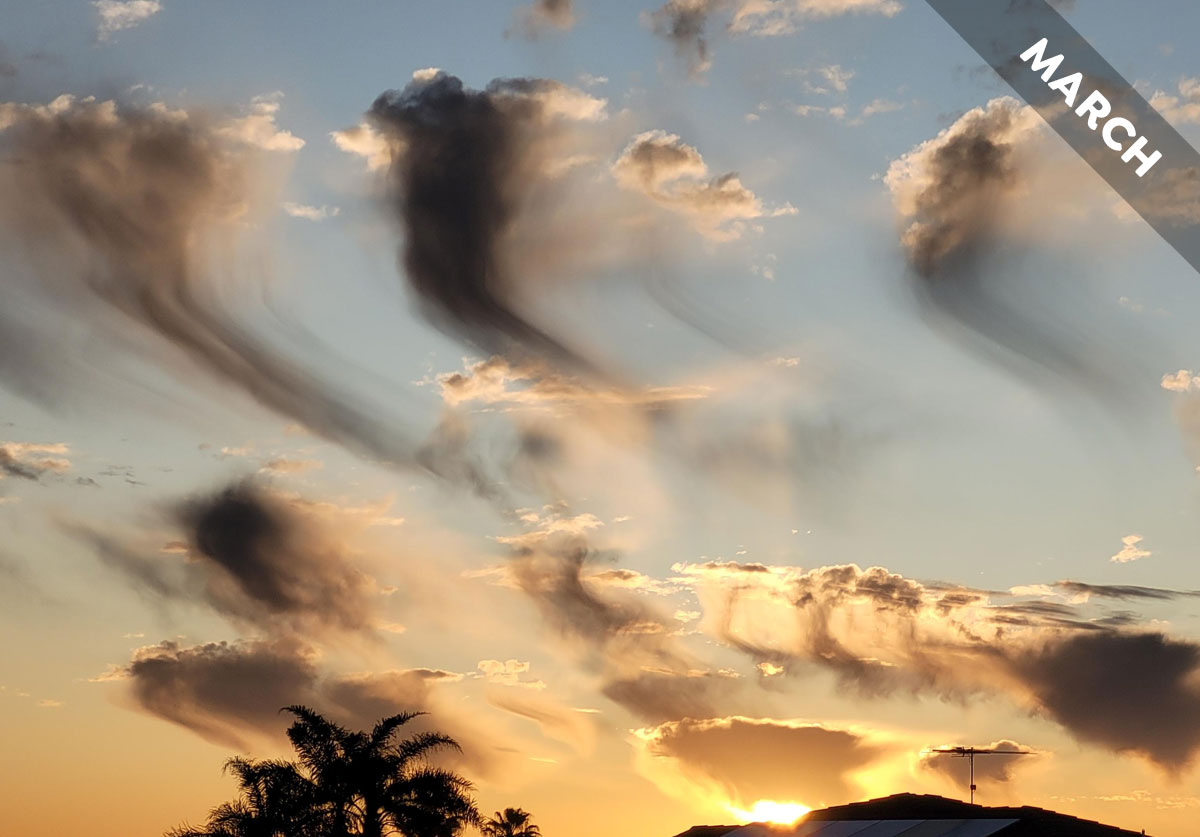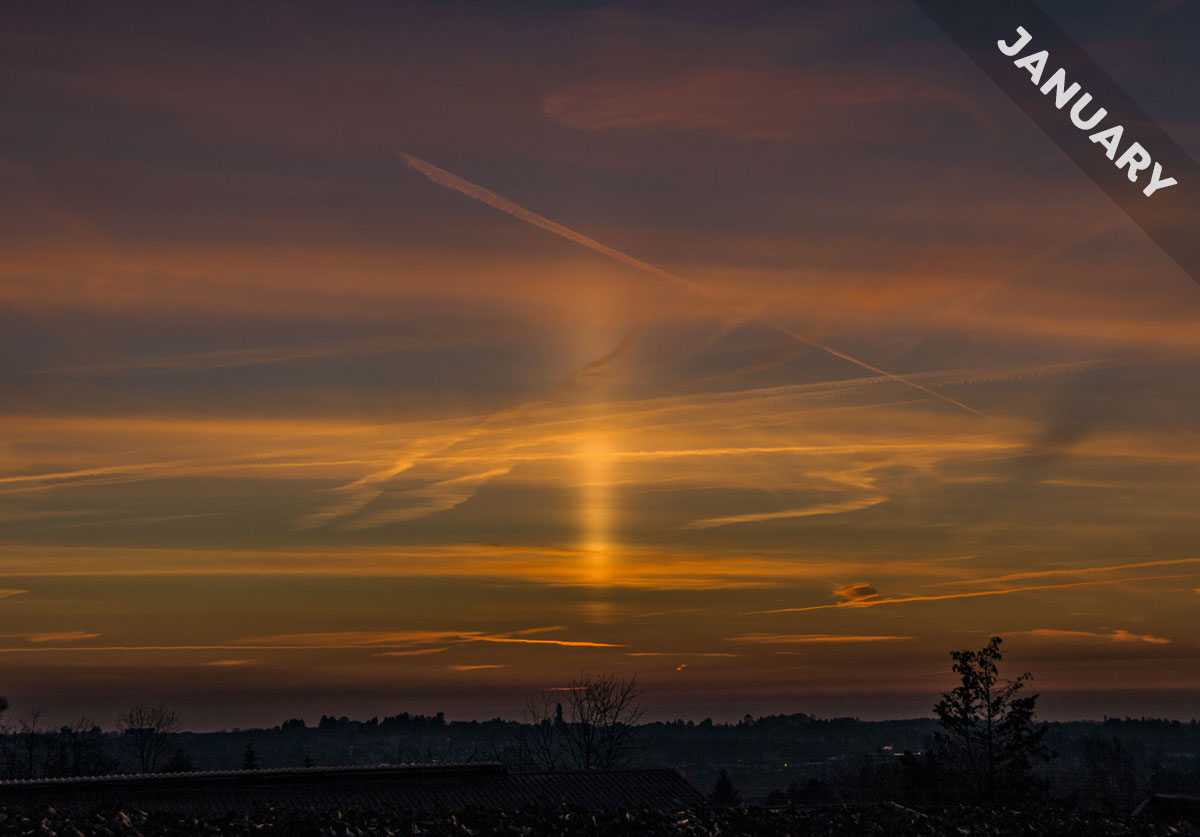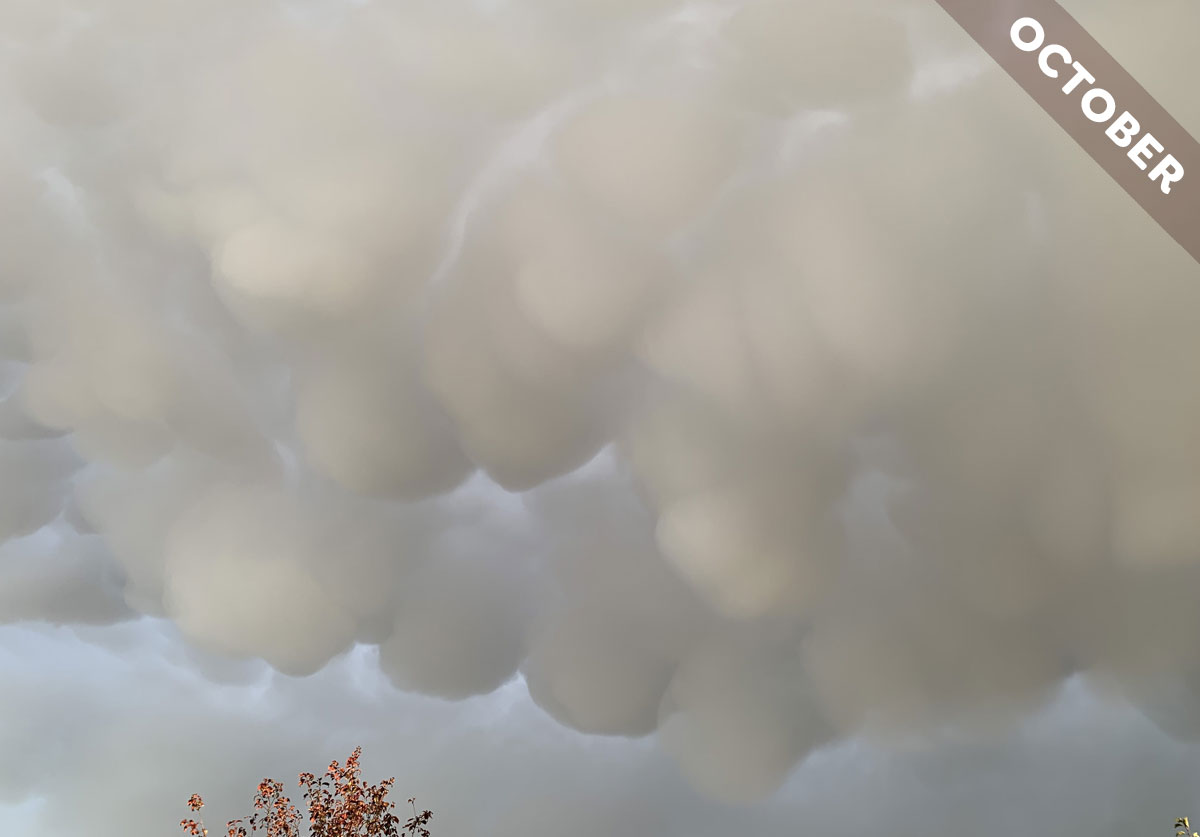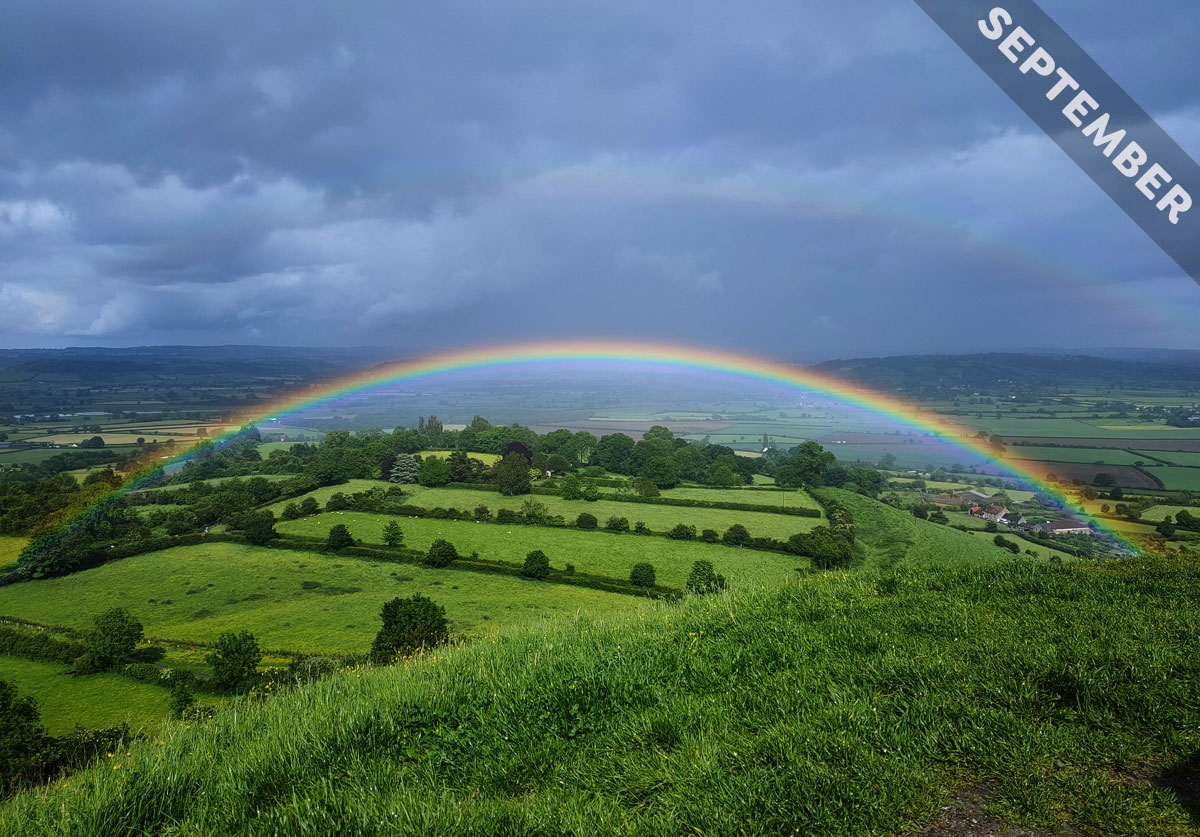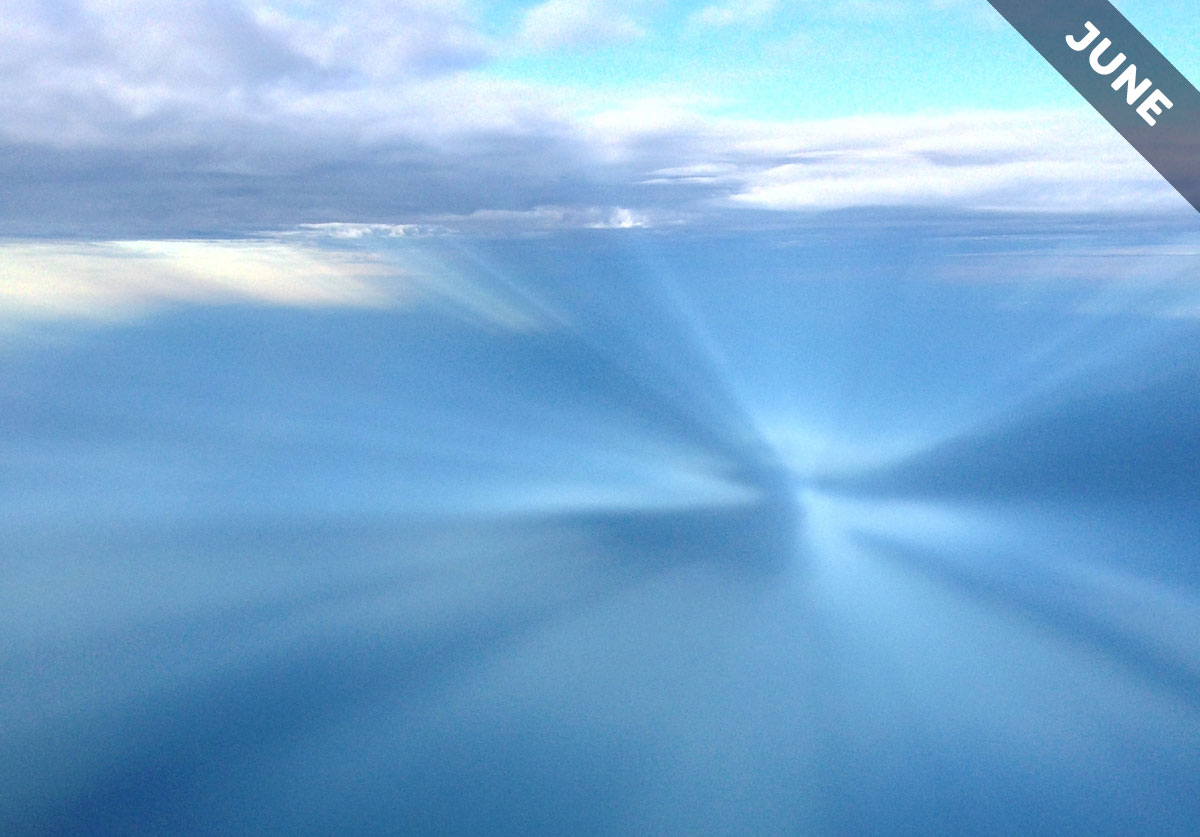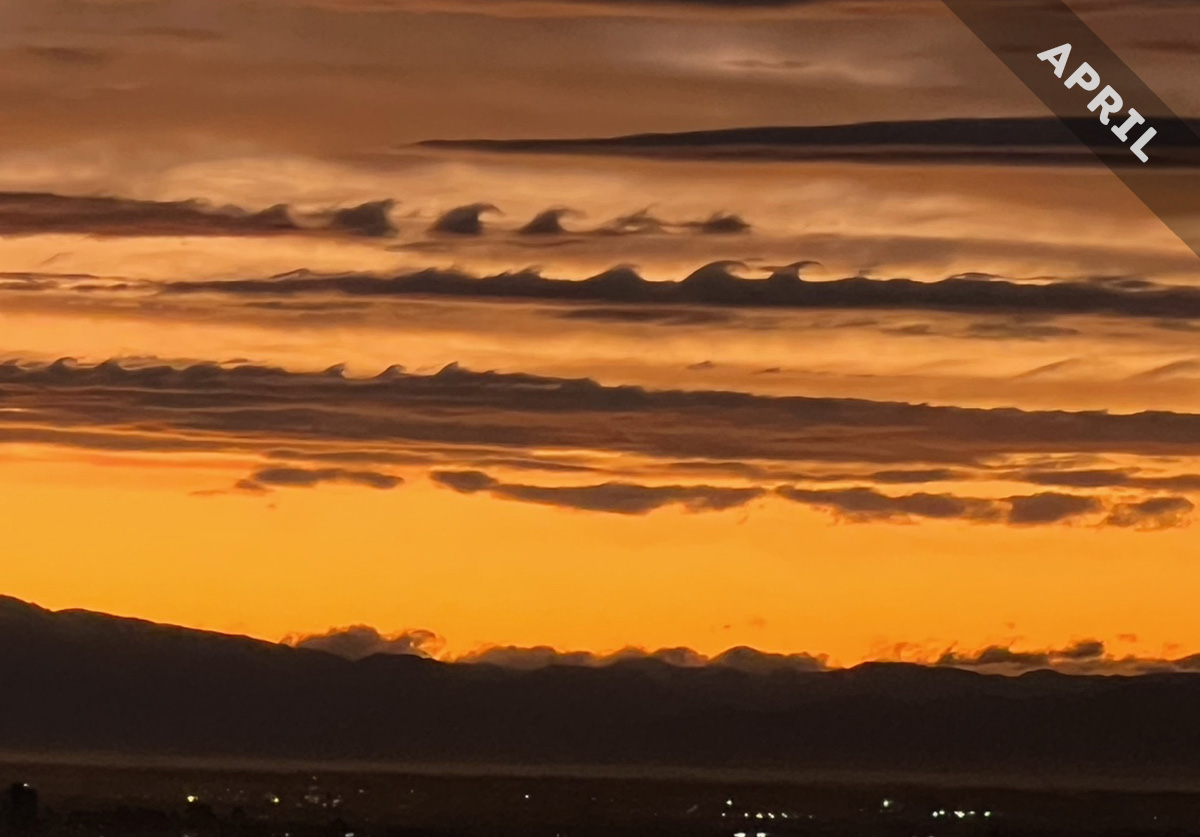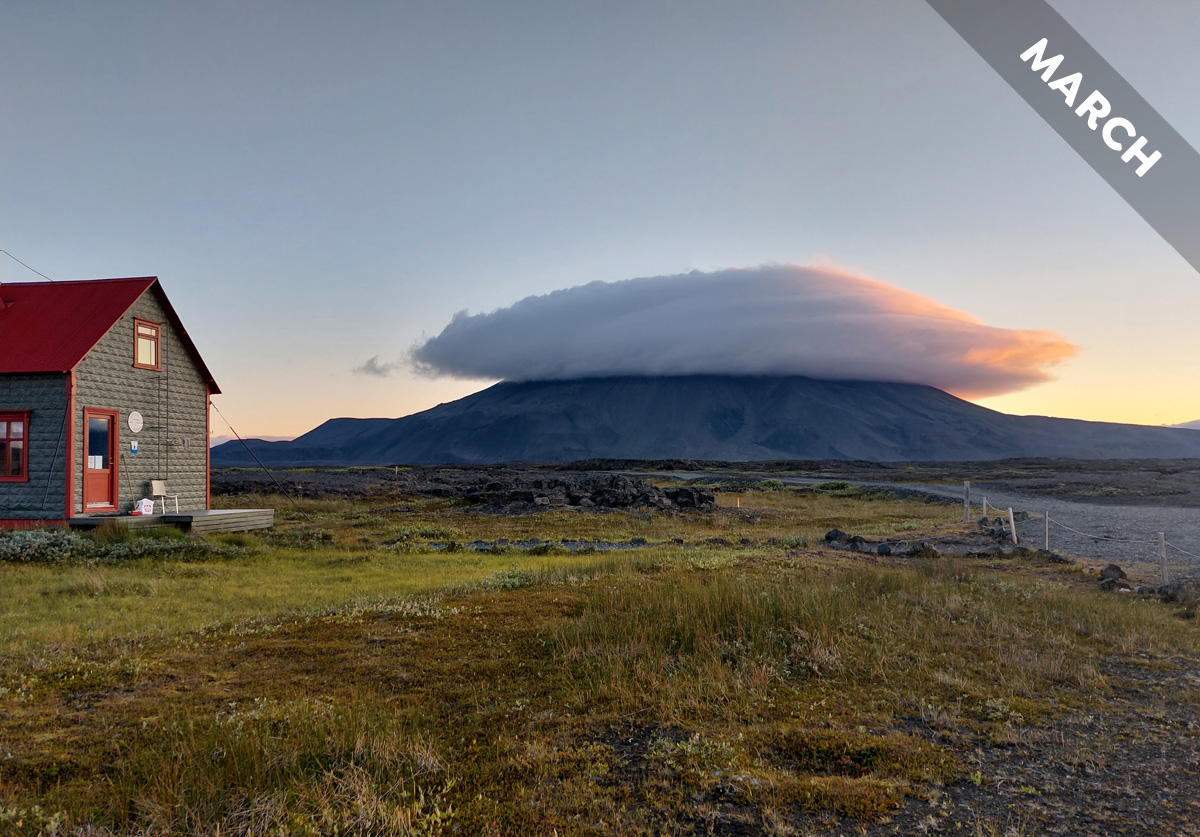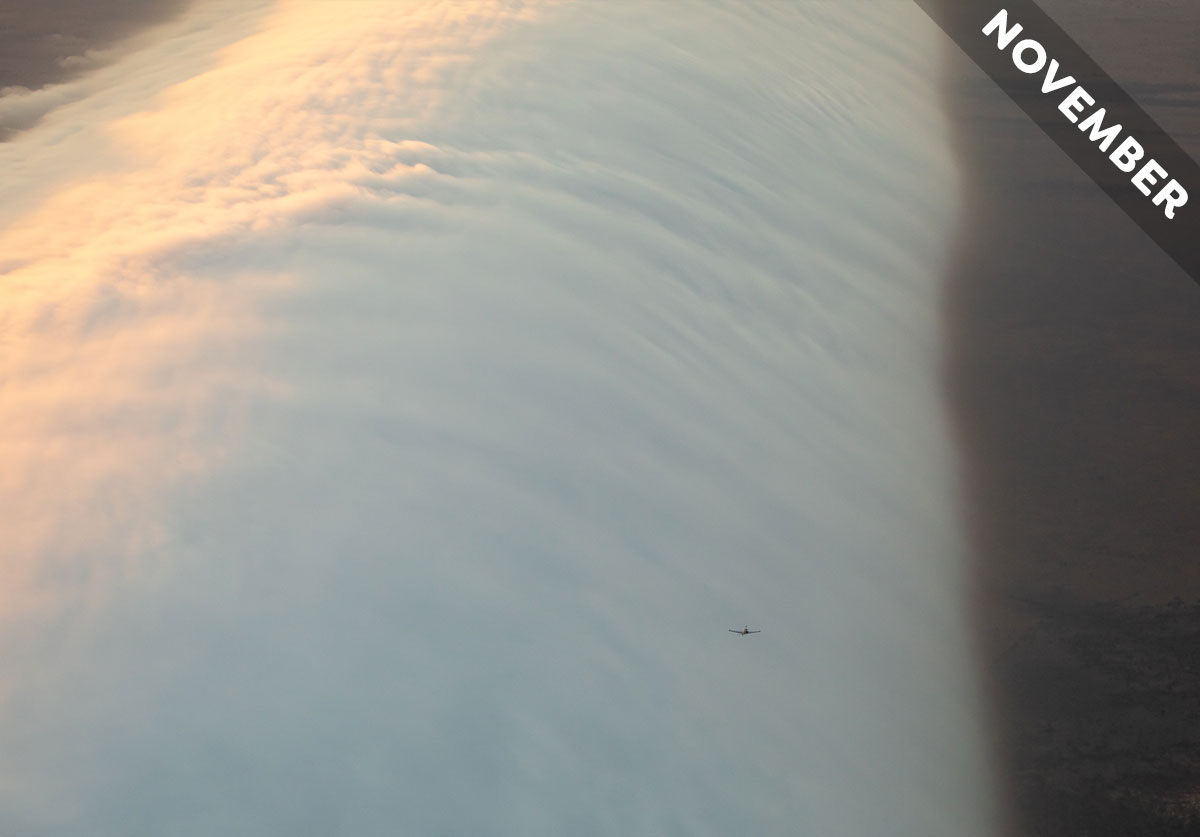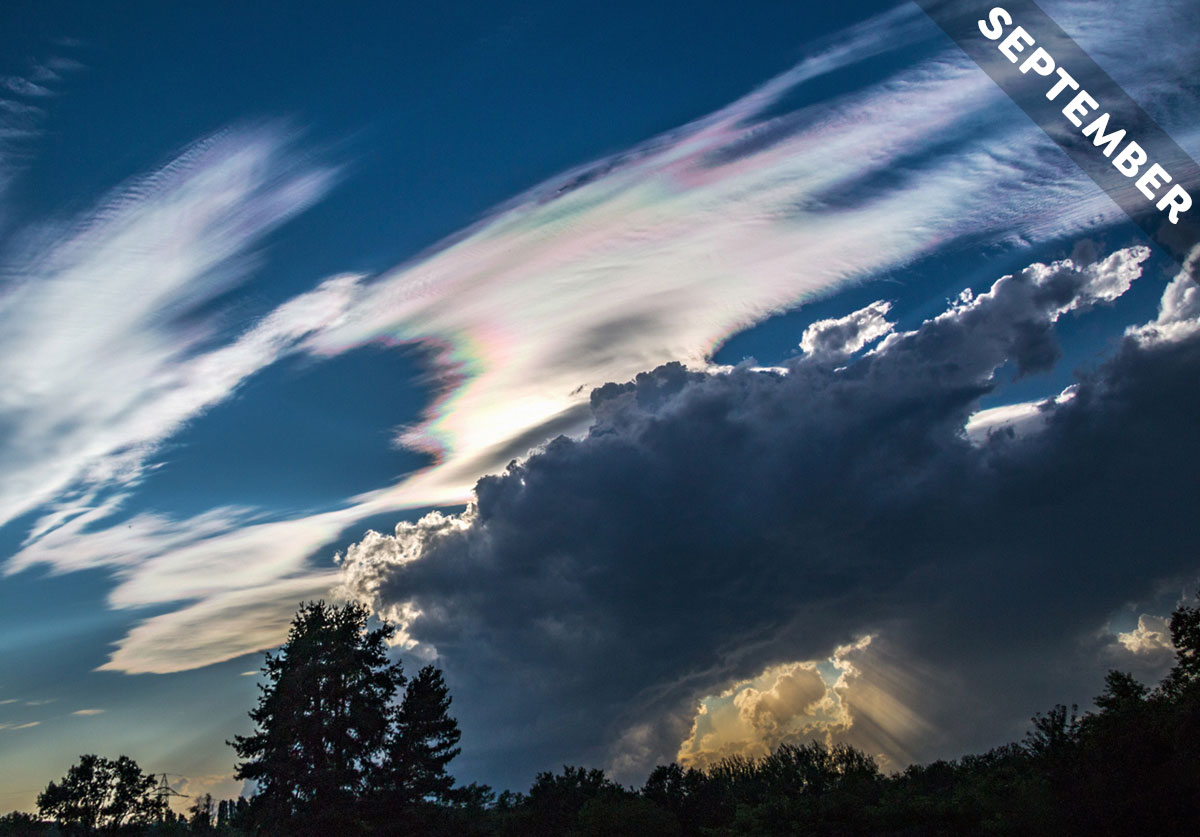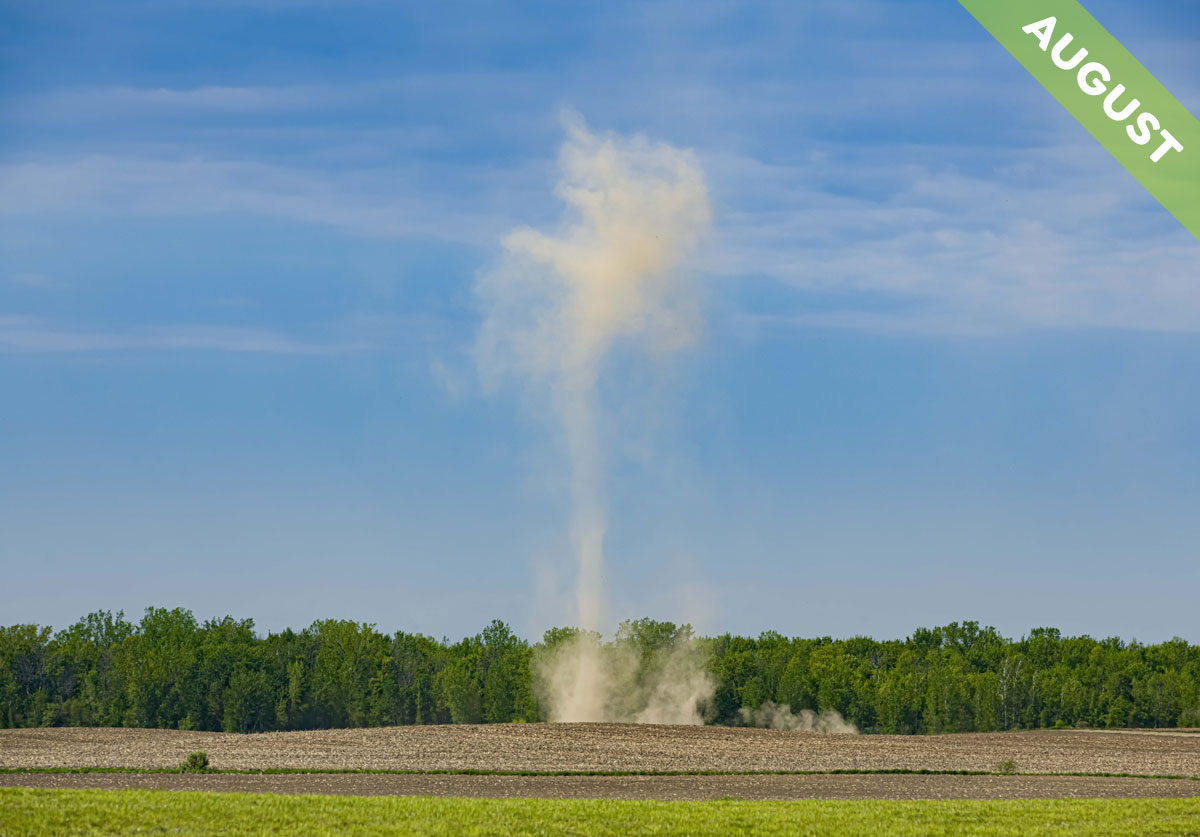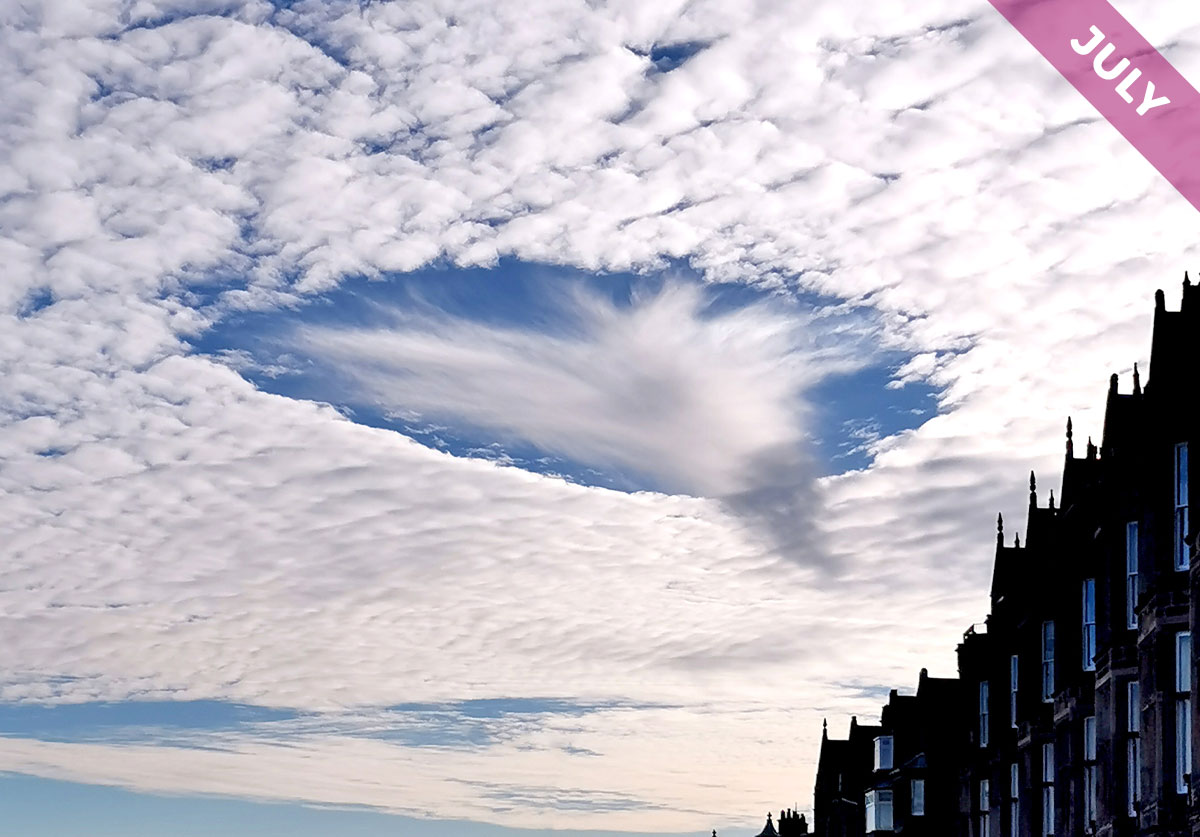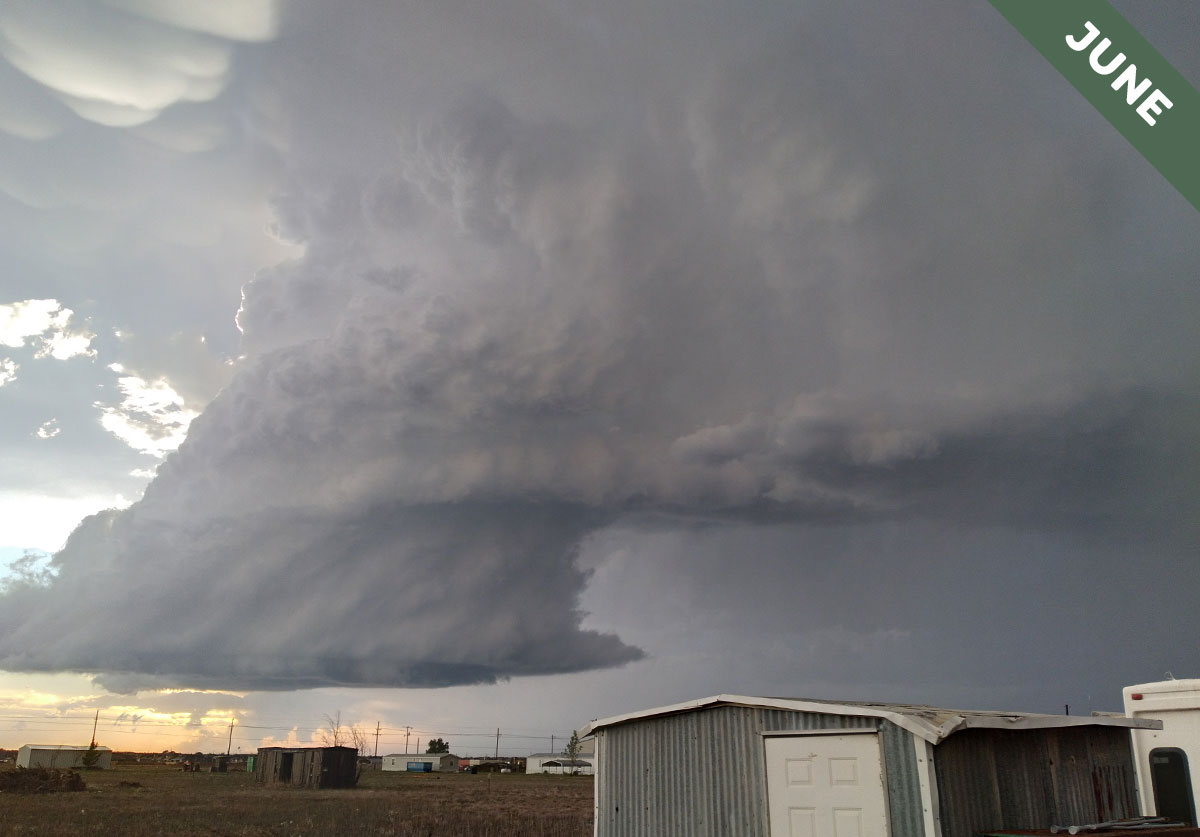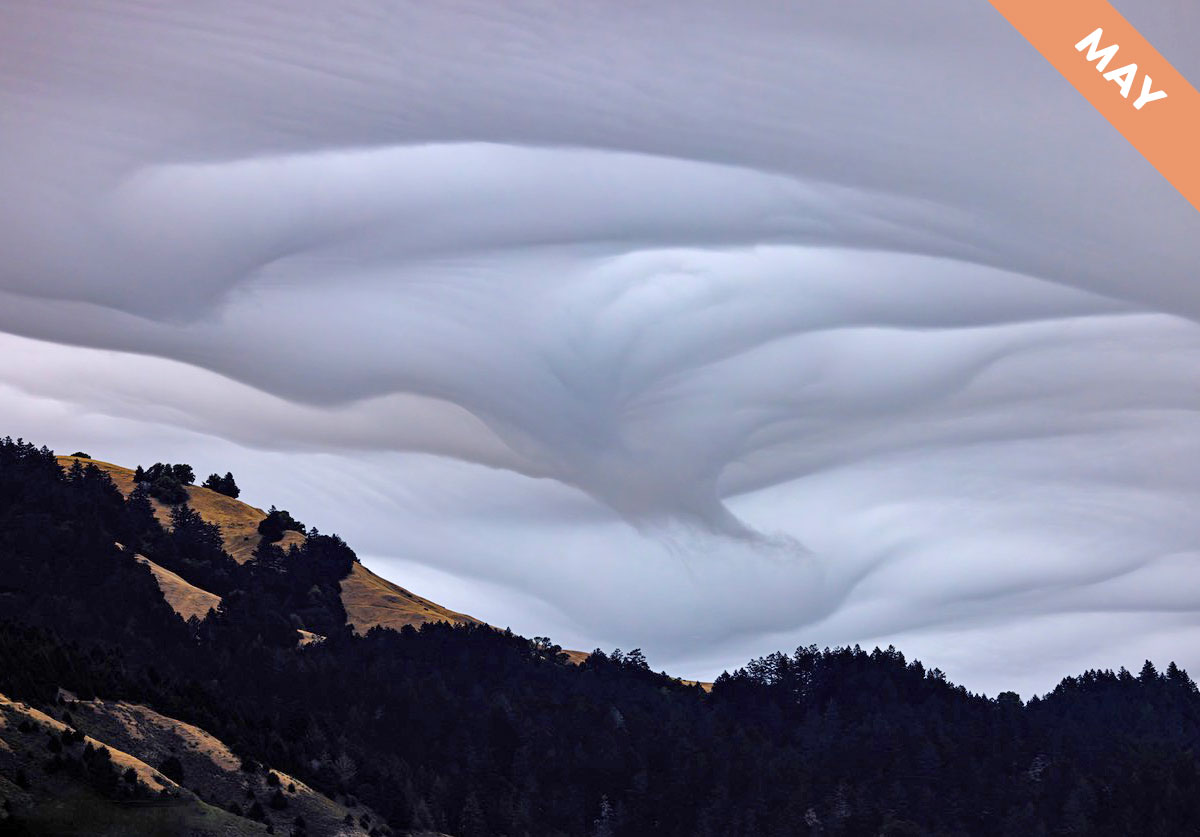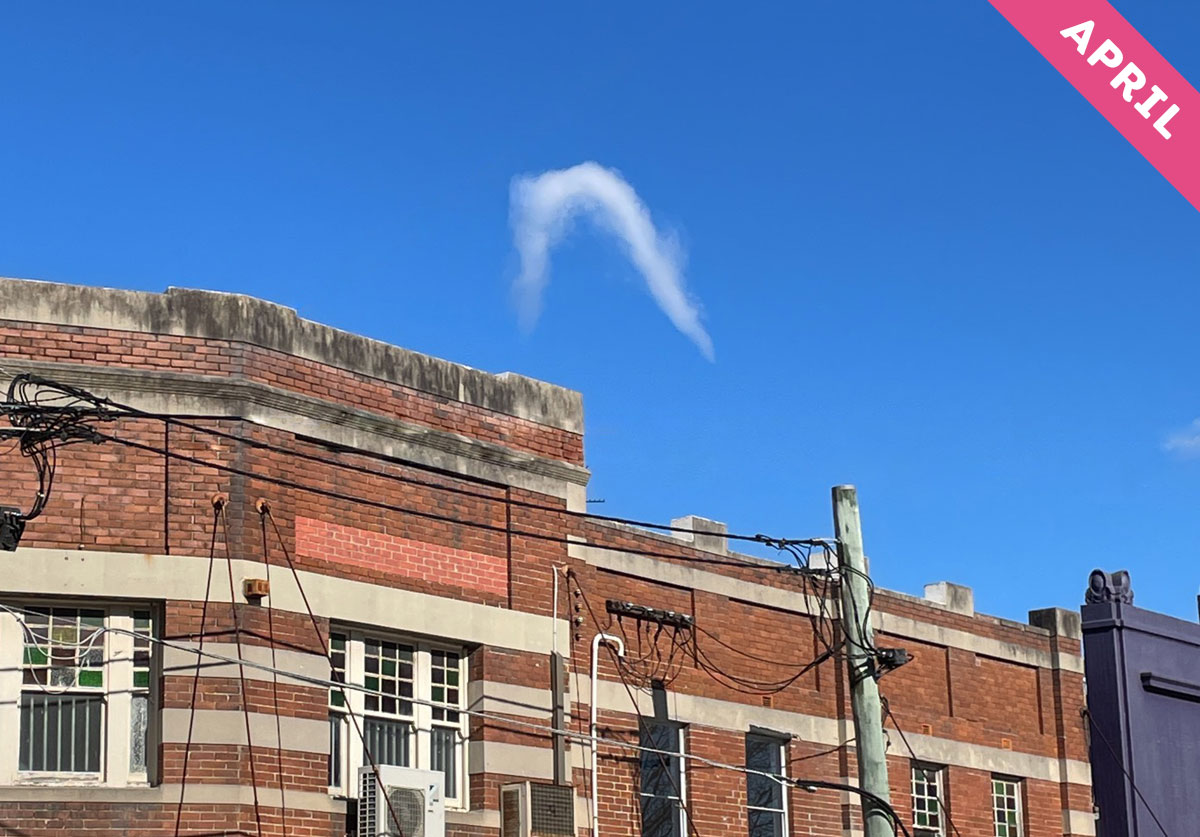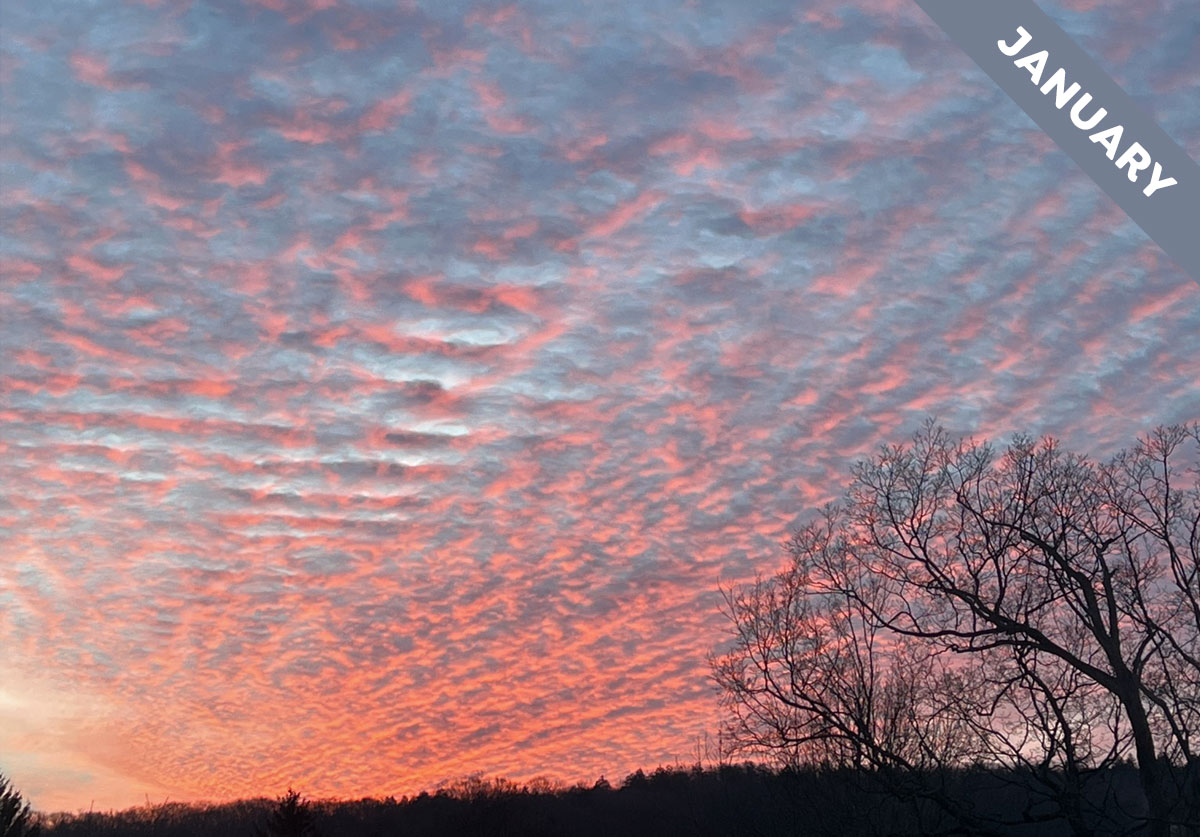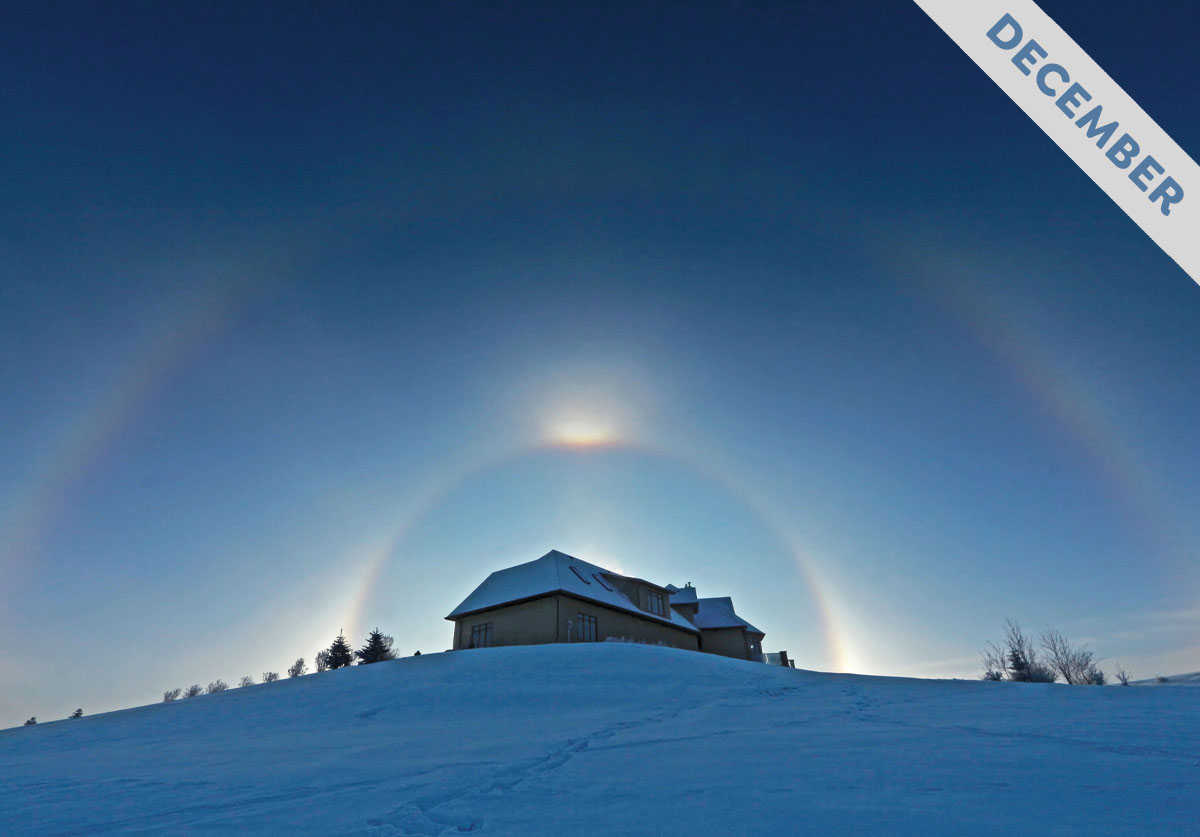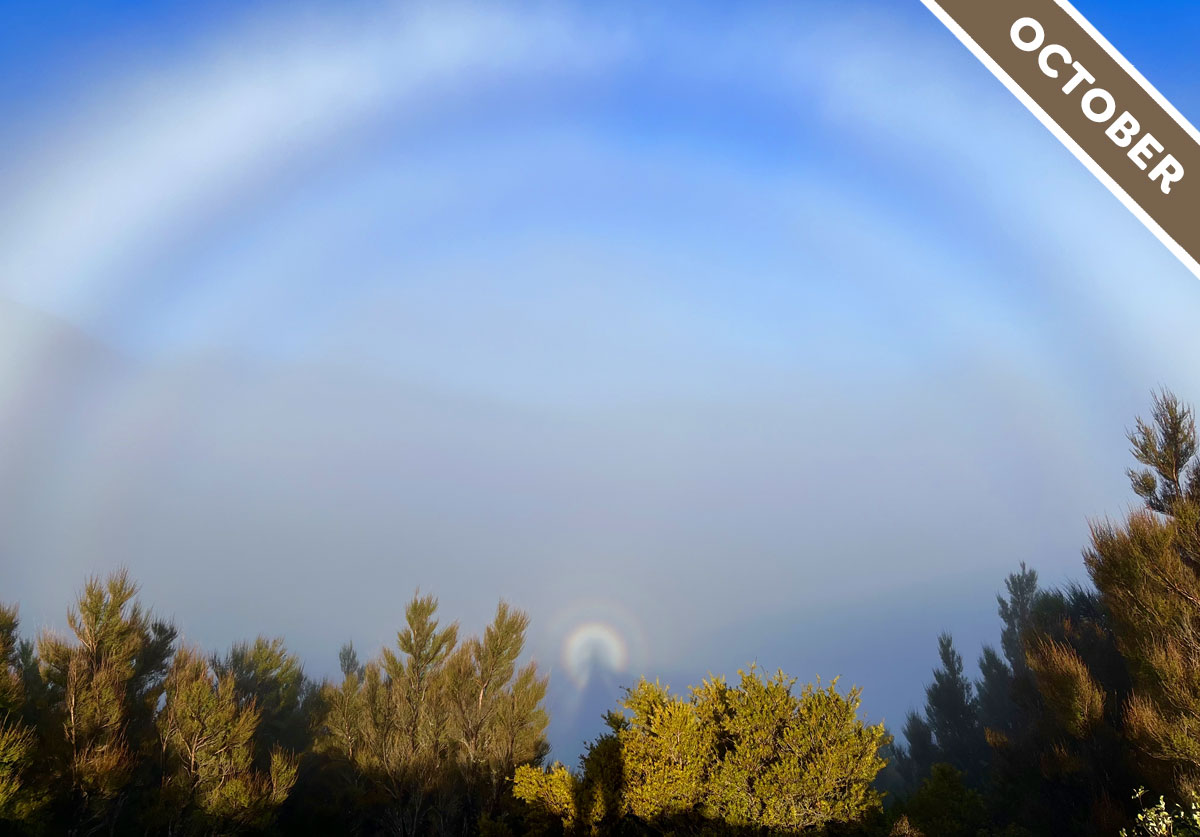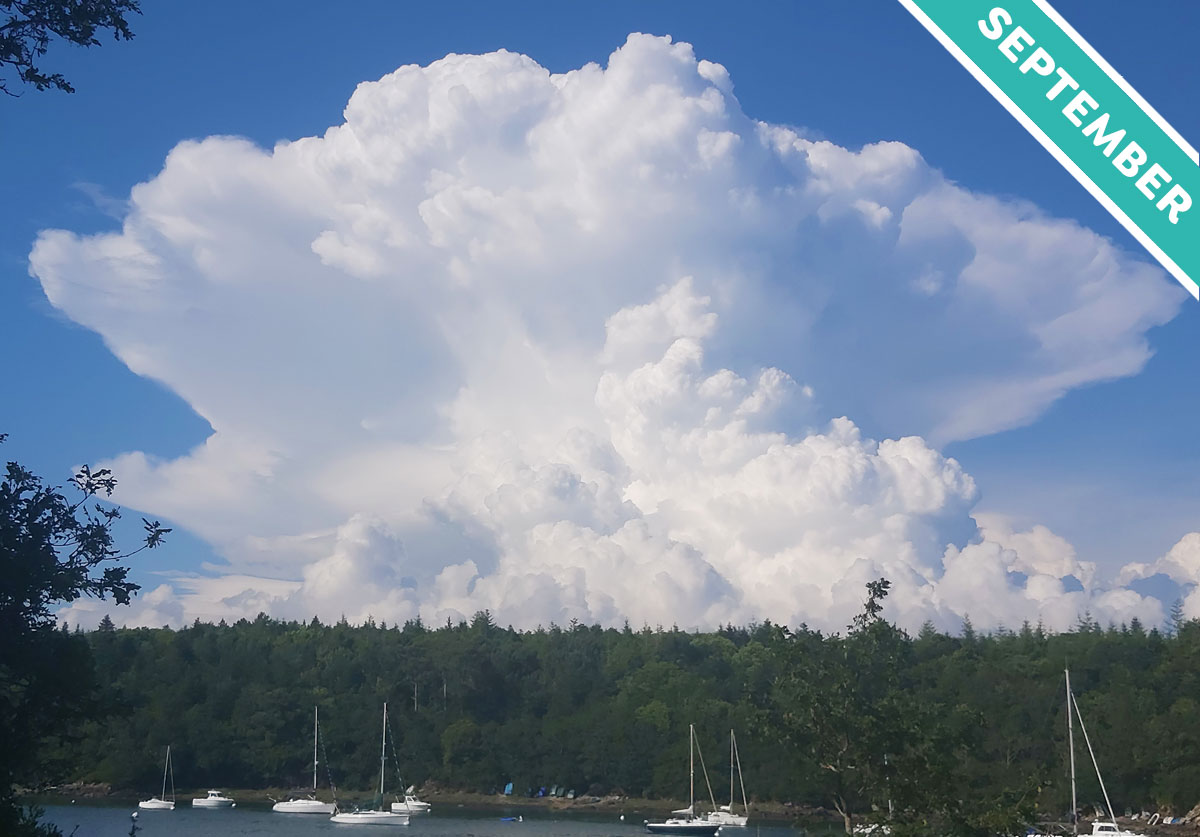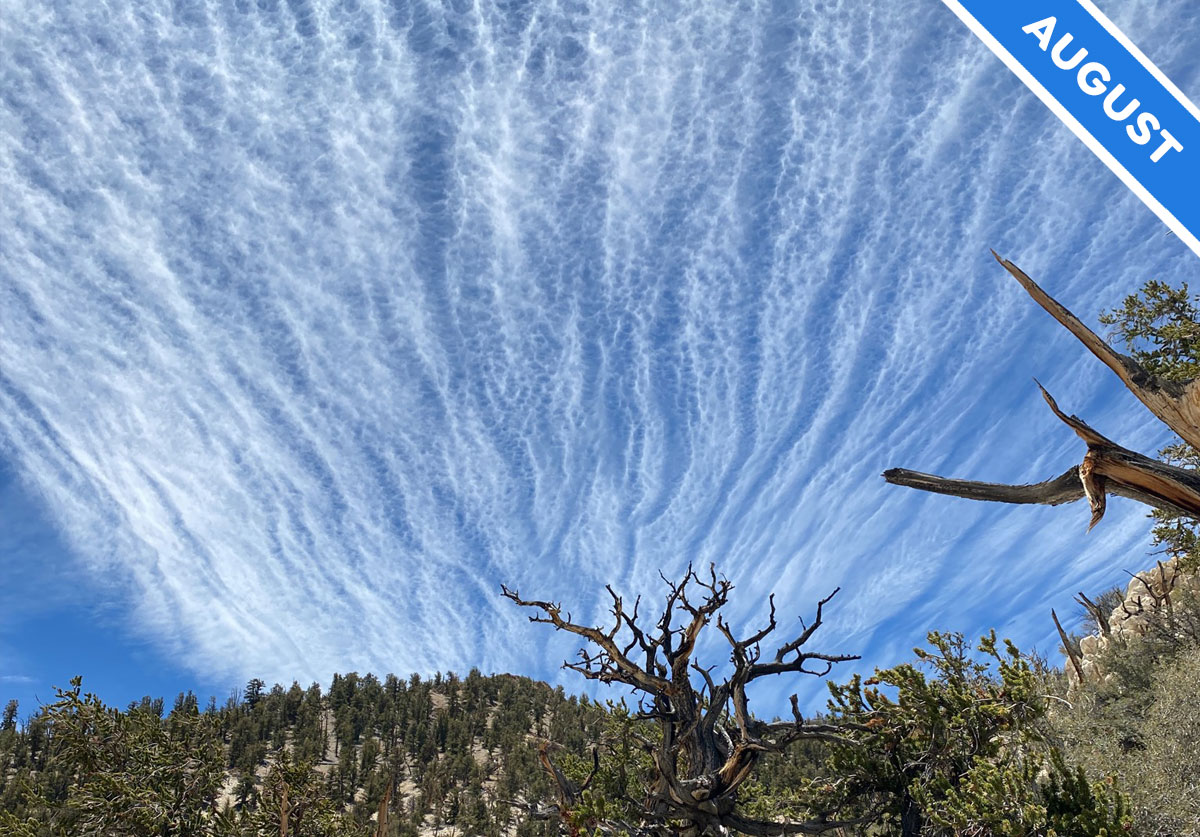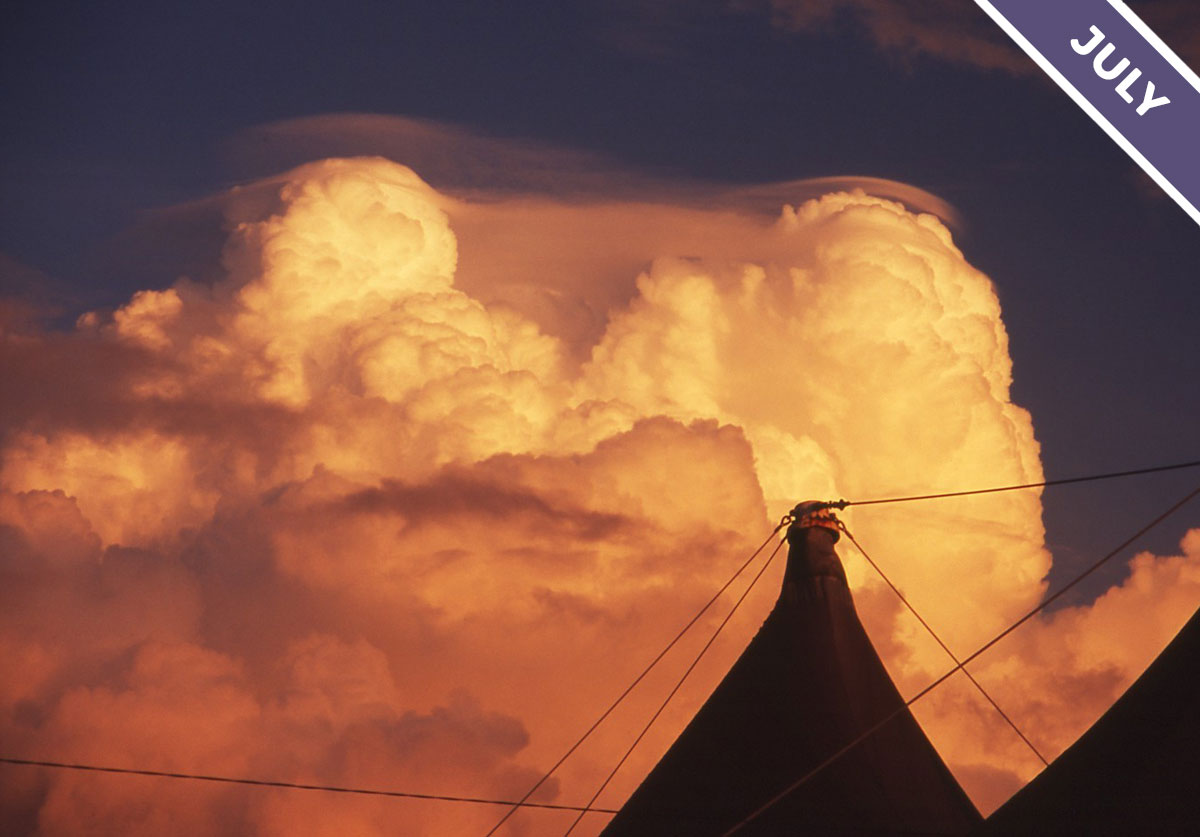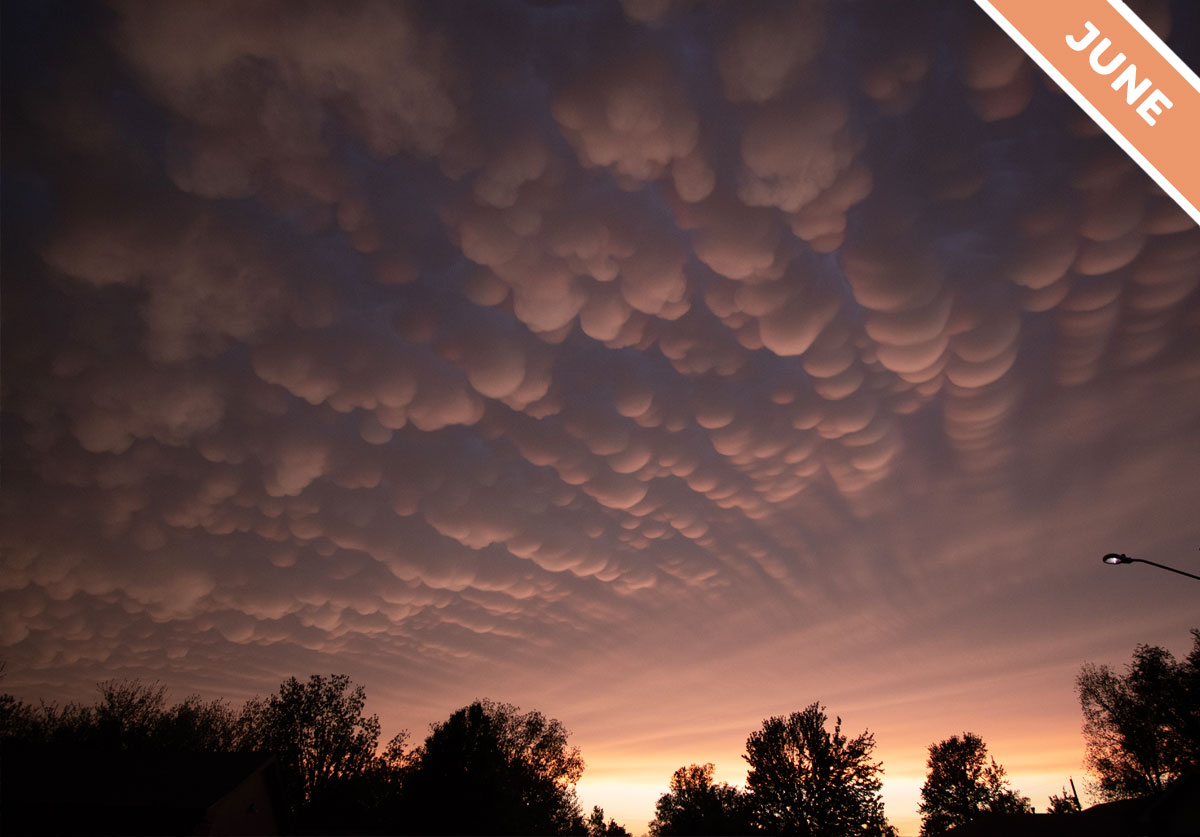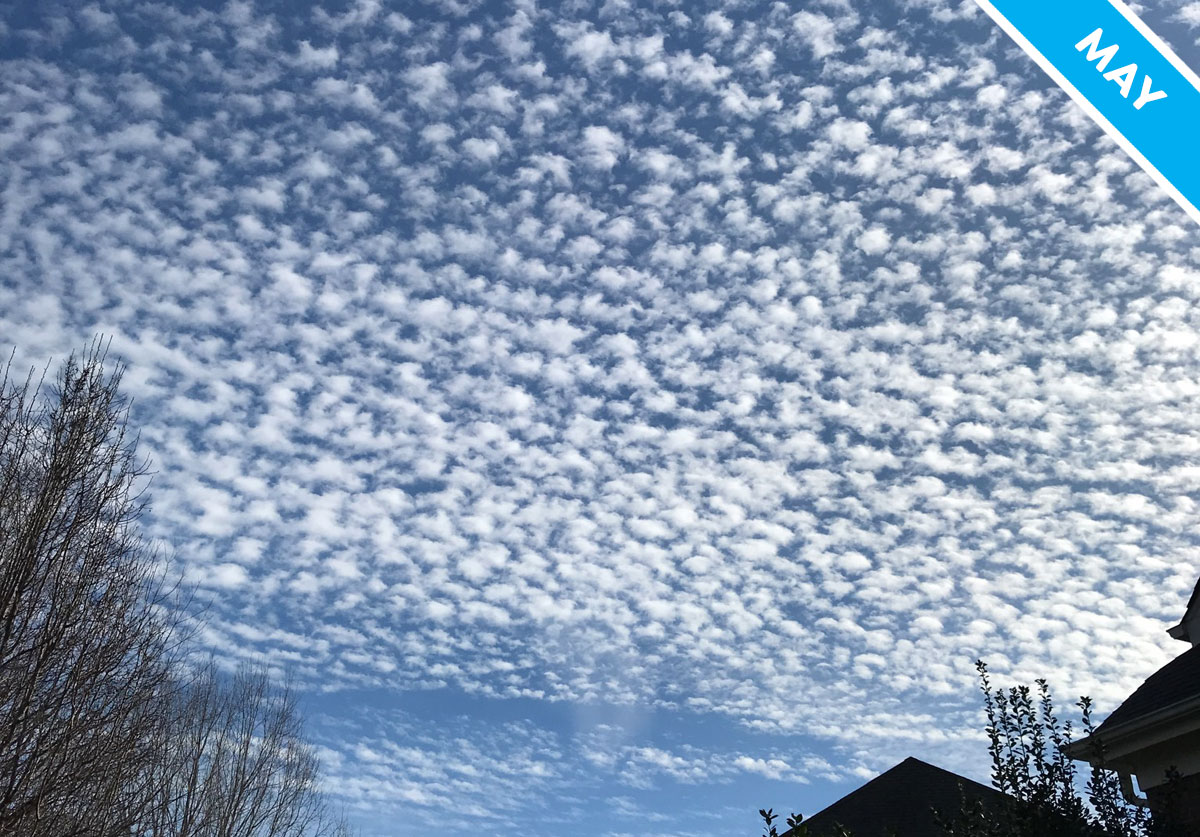Circumhorizon Arc – The Horizontal Halo
The family of optical effects known as halo phenomena are caused by the Sun shining through cloud ice crystals that act like tiny, floating prisms and mirrors, bending and reflecting the light. The ‘halo’ in the name suggests these effects appear circular, or, at least, in the shape of arcs, but several halo phenomena are not curved at all. A common example is the sun dog, or parhelion, which is a bright spot appearing off to one or other side of the Sun. Another halo phenomenon that isn’t shaped anything like a halo is far rarer. It’s a strip of often vibrant rainbow hues that’s flat, appearing as a horizontal strip of colours low in the sky when the Sun is high above. It is known as the circumhorizon arc.
This effect is also sometimes described as a summertime halo. That’s because, in the higher mid-latitudes, a circumhorizon arc can only form during the middle of the summer. Its optics depend on the Sun shining down through the cloud ice crystals from high above. For one to appear, the elevation of the Sun – the angle between the direction of the Sun and the horizon – needs to be greater than 58 degrees. Near the equator, the Sun’s often that high in the middle of the day, so the effect is not particularly rare. In the high latitudes, the Sun never gets that high at any time of the year, and so a circumhorizon arc can never form. In between, like off the coast of Tokyo, Japan, where Aimee Rogers (Member 64,812) spotted this circumhorizon arc on a flight, it can form during the summer months, but you’ll still need to keep a careful eye out to spot one.
That’s because the formation of a circumhorizon arc also depends on ice crystals of a particular shape and orientation. The ice of the crystals needs to be clear, so they can let the sunlight shine through like prisms, and they need to be shaped like simple hexagonal plates, which have their large faces horizontal as they gently fall through the sky. This must have been the case for the ice crystals in the Cirrus and Cirrostratus clouds Aimee spotted from the window seat of her flight out of Tokyo. They formed a circumhorizon arc halo phenomenon that was bright, resplendent, and, yes, shaped nothing like a halo.
Circumhorizon arc spotted on a flight over the Pacific Ocean off the east coast of Japan by Aimee Rogers (Member 64,812). View this in our Photo Gallery.


